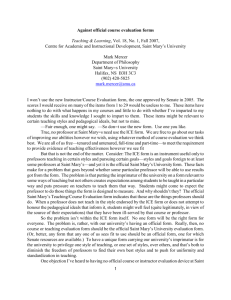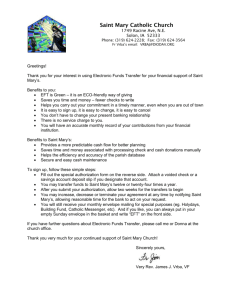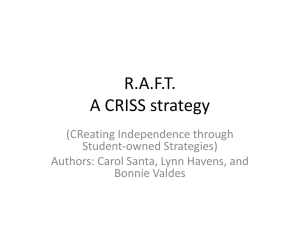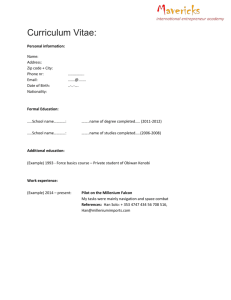Ill literacy - Saint Mary`s University
advertisement
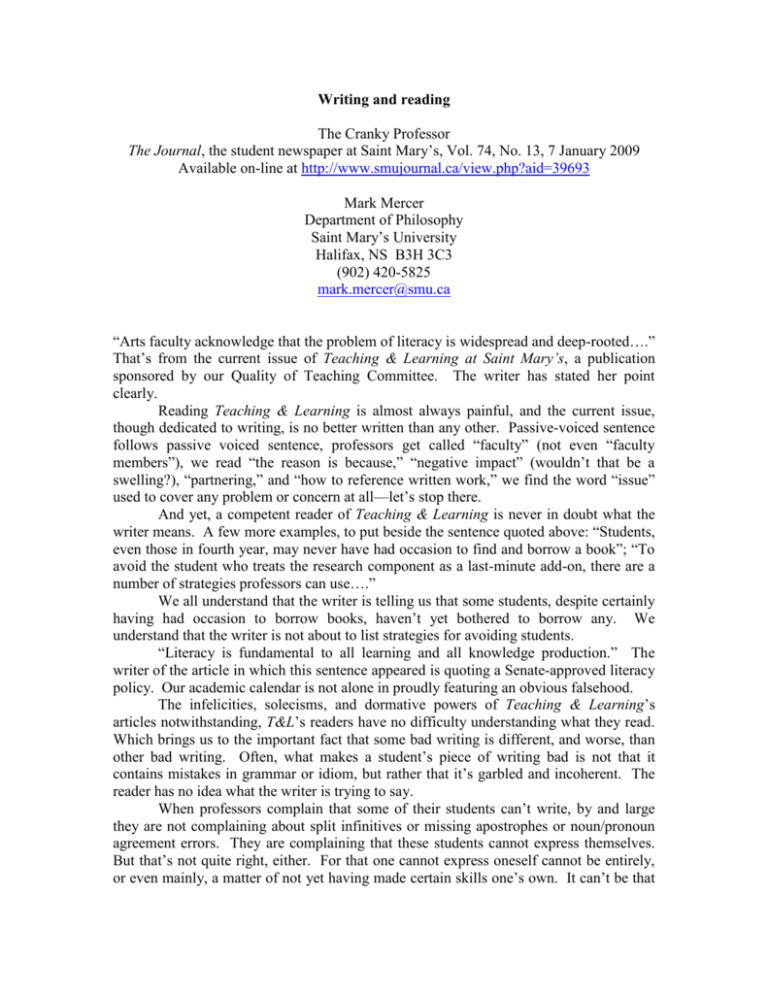
Writing and reading The Cranky Professor The Journal, the student newspaper at Saint Mary’s, Vol. 74, No. 13, 7 January 2009 Available on-line at http://www.smujournal.ca/view.php?aid=39693 Mark Mercer Department of Philosophy Saint Mary’s University Halifax, NS B3H 3C3 (902) 420-5825 mark.mercer@smu.ca “Arts faculty acknowledge that the problem of literacy is widespread and deep-rooted….” That’s from the current issue of Teaching & Learning at Saint Mary’s, a publication sponsored by our Quality of Teaching Committee. The writer has stated her point clearly. Reading Teaching & Learning is almost always painful, and the current issue, though dedicated to writing, is no better written than any other. Passive-voiced sentence follows passive voiced sentence, professors get called “faculty” (not even “faculty members”), we read “the reason is because,” “negative impact” (wouldn’t that be a swelling?), “partnering,” and “how to reference written work,” we find the word “issue” used to cover any problem or concern at all—let’s stop there. And yet, a competent reader of Teaching & Learning is never in doubt what the writer means. A few more examples, to put beside the sentence quoted above: “Students, even those in fourth year, may never have had occasion to find and borrow a book”; “To avoid the student who treats the research component as a last-minute add-on, there are a number of strategies professors can use….” We all understand that the writer is telling us that some students, despite certainly having had occasion to borrow books, haven’t yet bothered to borrow any. We understand that the writer is not about to list strategies for avoiding students. “Literacy is fundamental to all learning and all knowledge production.” The writer of the article in which this sentence appeared is quoting a Senate-approved literacy policy. Our academic calendar is not alone in proudly featuring an obvious falsehood. The infelicities, solecisms, and dormative powers of Teaching & Learning’s articles notwithstanding, T&L’s readers have no difficulty understanding what they read. Which brings us to the important fact that some bad writing is different, and worse, than other bad writing. Often, what makes a student’s piece of writing bad is not that it contains mistakes in grammar or idiom, but rather that it’s garbled and incoherent. The reader has no idea what the writer is trying to say. When professors complain that some of their students can’t write, by and large they are not complaining about split infinitives or missing apostrophes or noun/pronoun agreement errors. They are complaining that these students cannot express themselves. But that’s not quite right, either. For that one cannot express oneself cannot be entirely, or even mainly, a matter of not yet having made certain skills one’s own. It can’t be that one is simply lacking the facility with words and grammar needed to body forth one’s already intricate and developed thoughts. It must, instead, at least for the most part, have to do with lacking developed thoughts. Happily, three Teaching & Learning contributors explicitly recognize this point in their articles. Shelagh Crooks, Julie-Ann Vincent, and Eliana Clay each notes that clarity and structure are key to writing well, and that clarity and structure are more about thinking than about words on paper. Work on the thinking and matters of grammar and idiom will take care of themselves—and if they don’t, it won’t matter. Work on the thinking. We professors must strive to bring into students’ minds large, well-developed, well-integrated thoughts. But how to do that? By working on reading. That’s my suggestion. (It’s Professor Crooks’s suggestion as well. Professor Crooks would have us regularly give our students reading assignments, and she helpfully provides a four-question template for our students to use.) Before we professors complain that some of our students can’t write, let us complain that they don’t read very well, and let us start there. Any chance the Writing Centre at Saint Mary’s will become the Reading and Writing Centre? —30—



